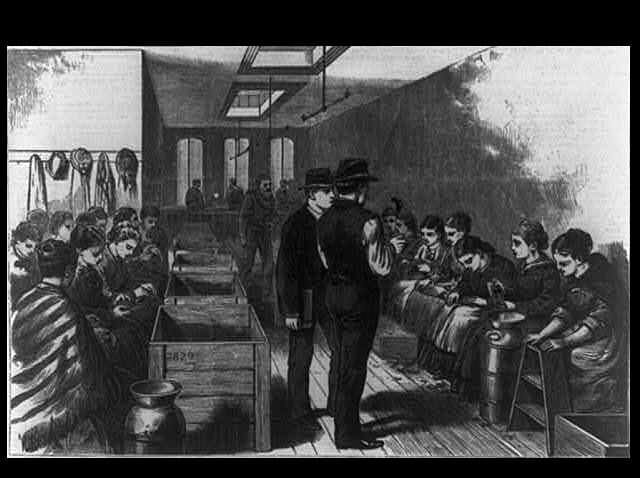
Cigar Culture in the United States
|
|
Time to read 4 min
Your cart is currently empty.
Shop our products|
|
Time to read 4 min
Cigar culture in the United States boasts a long and fascinating history and has run parallel with the country's growth, social shifts, and changing preferences. It began as a novelty product brought back by explorers, only to quickly gain status as a symbol of luxury and style. There is no denying the fact that the cigar has played a significant role in American culture. Let’s take a look into the evolution of cigar culture in the US, its history, industry, manufacturing, trends, market, legislation, and cultural impact.
Cigar smoking found its way to American soil in 1492 through the encounters between European explorers and indigenous peoples, particularly the Taino people of Cuba. By then, tobacco was a well-known and integral part of the indigenous Caribbean cultures but was entirely unfamiliar to Europeans until the discovery of the New World in the 15th century. The first European observers were amazed by the indigenous people's practice of smoking dry herbs wrapped in leaves, a precursor to the modern cigar.
Following the arrival of Europeans and the first wave of colonization, tobacco quickly became one of the primary products driving European colonialism. The Spanish, in particular, introduced tobacco to Europe in the early 16th century. Initially, it was regarded as the "sacred herb" due to its alleged medicinal properties. In time, European sailors and conquistadors adopted the practice of smoking rolled tobacco leaves. This made smoking primitive cigars rather prevalent throughout Spain, Portugal, France, Italy, and the Dutch Empire.
Tobacco cultivation began earnestly in Spanish colonies like Hispaniola and Santo Domingo in the early 16th century. In 1542, the first cigar factory was established in Cuba. While tobacco was originally believed to have medicinal qualities, it eventually faced censure from figures like Philip II of Spain and James I of England.
However, it was during the Seven Years' War that cigar smoking gained a strong foothold in the United States. Israel Putnam is credited with bringing a cache of Havana cigars back to the US, popularizing cigar smoking after the American Revolution. He also introduced Cuban tobacco seeds, which were planted in New England and contributed to the development of the renowned shade-grown Connecticut wrapper.
In the late 18th and 19th centuries, cigar smoking was common, while cigarettes remained relatively rare. Interestingly, famous writer Rudyard Kipling even penned a famous smoking poem, "The Betrothed," in 1886. The cigar business became a booming industry, employing a good number of people. This was before the mechanized manufacturing of cigars became common. Cigar workers in both the US and Cuba were actively involved in labor strikes and disputes, laying the foundation for modern labor unions.
One important figure in the history of American cigar culture is Vicente Martinez Ybor. In 1869, he relocated his cigar manufacturing operations from Havana, Cuba, to Key West, Florida, escaping the turmoil of the Ten Years' War. Other manufacturers soon followed, making Key West an important cigar manufacturing center. In 1885, Ybor moved again, establishing the largest cigar factory in the world in Ybor City, near Tampa, Florida.
Thousands of Cuban and Spanish tabaqueros (tobacconists) migrated to the area, producing hundreds of millions of cigars annually. By 1929, Ybor City and West Tampa had rolled over 500 million ‘clear Havana’ cigars, earning the nickname ‘Cigar Capital of the World’.
However, this peak was short-lived and most factories had closed by the early 1930s. Today, only one company, the J. C. Newman Cigar Company continues to make cigars in the Ybor City area, using antique, hand-operated, cigar-making machines from the 1930s.
In New York, cigars were initially made by rollers working in their homes. By 1883, cigars were manufactured in 127 apartment houses in New York, providing employment for numerous families and individuals. A state statute banning this practice, citing wage suppression, was briefly enacted but later ruled unconstitutional. The industry returned to New York, where it continued to thrive.
By 1905, there were 80,000 cigar-making operations in the US, most of them small, family-operated shops where cigars were rolled and sold immediately. While machine-made cigars have become more widespread, some are still rolled by hand, especially in Central America, Cuba, and small cigar factories in US cities. These hand-rolled cigars bear the label ‘totally a mano’ or ‘hecho a mano’, highlighting their quality and craftsmanship.
Today, cigar culture in the United States has evolved significantly. While cigars are no longer as rampant as they once were, they continue to have a following of aficionados who appreciate the artistry and tradition behind hand-rolled cigars.
Cigars have also found a place in popular culture, with cigar lounges, clubs, and events serving as gathering spots for enthusiasts. Cigar makers have adapted to modern tastes, offering a wide range of flavors and styles to cater to diverse palates.
The cigar industry has not been without its challenges, including legislative and regulatory hurdles. In recent years, cigar regulations have undergone changes, including labeling requirements and taxation. Advocacy groups and cigar enthusiasts have been active in defending their interests and preserving the tradition of cigar smoking.
From its early days as a novelty product to its status as a symbol of sophistication and luxury, the cigar has considerably influenced American culture. Having battled several challenges, the traditions of cigar culture continue to thrive, thanks to the community of aficionados who appreciate the pleasures of cigar smoking.